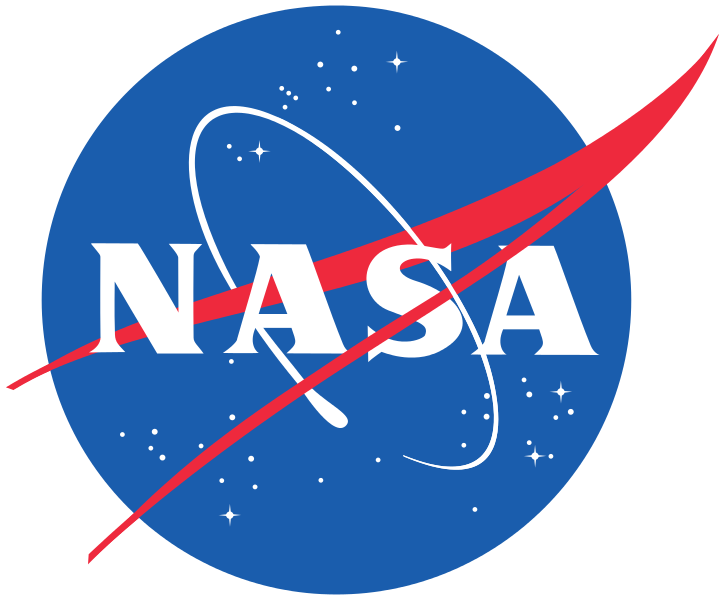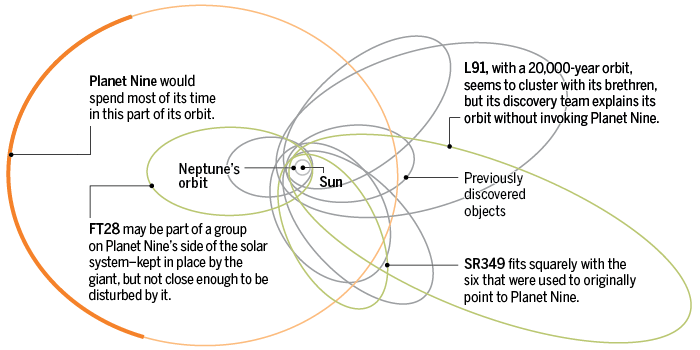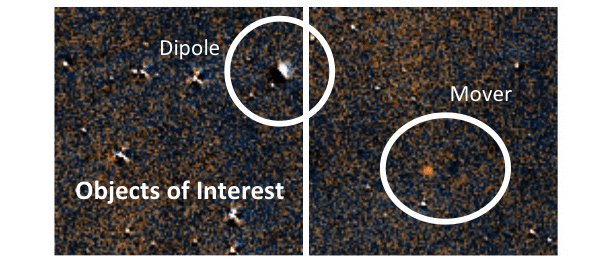It looks like you're using an Ad Blocker.
Please white-list or disable AboveTopSecret.com in your ad-blocking tool.
Thank you.
Some features of ATS will be disabled while you continue to use an ad-blocker.
6
share:
This has been published Today I thought it may interest some ? I cannot see the wood from the trees. Can You ?
www.zooniverse.org... ( Backyards World Project )
 Thanks to NASA, which has funded this work through the Science Innovation Fund.
Thanks to NASA, which has funded this work through the Science Innovation Fund.


NASA is inviting the public to help search for possible undiscovered worlds in the outer reaches of our solar system and in neighboring interstellar space. A new website, called Backyard Worlds: Planet 9, lets everyone participate in the search by viewing brief movies made from images captured by NASA's Wide-field Infrared Survey Explorer (WISE) mission. The movies highlight objects that have gradually moved across the sky. "There are just over four light-years between Neptune and Proxima Centauri, the nearest star, and much of this vast territory is unexplored," said lead researcher Marc Kuchner, an astrophysicist at NASA's Goddard Space Flight Center in Greenbelt, Maryland. "Because there's so little sunlight, even large objects in that region barely shine in visible light. But by looking in the infrared, WISE may have imaged objects we otherwise would have missed." Read more at: phys.org...
We need your help searching for new objects at the edges of our solar system. In this project, we'll ask you to help us distinguish real celestial objects from image artifacts in data from NASA's Wide-field Infrared Survey Explorer (WISE) mission. The real objects are brown dwarfs and low-mass stars, the Sun's nearest neighbors. You may find an object closer than Proxima Centauri (the closest star to the Sun) or even discover the Sun's hypothesized ninth planet, which models suggest might appear in these images.
www.zooniverse.org... ( Backyards World Project )

How Many Planets Are in the Solar System? So far, we know of eight planets orbiting the Sun, but there could be more out there to find. Patterns in the orbits of the comet-like objects in the outer solar system (the Kuiper belt) suggest that there is a ninth planet orbiting beyond Neptune. Models of this planet imply that we may have already imaged it with NASA's WISE telescope, and simply not recognized it. Together, we're going to look through the data from this telescope in a powerful new way to try to spot it. Here is a diagram showing some of the orbits of some Kuiper Belt Objects (L91, FT28, SR349 etc.) that point to the presence of planet nine. It also shows a possible orbit for planet nine. Source: (Diagram) G. Grullón/Science; (Data) Scott Sheppard/Michele Bannister.

The WISE All-Sky Infrared Survey We will be scanning the Solar System's frontier using infrared images from NASA's Wide-field Infrared Survey Explorer (WISE) telescope. While ordinary stars and the familiar eight planets shine brightly at visible wavelengths, brown dwarfs glow mainly in the infrared. Planet nine should also glow in the infrared. Here at Backyard Worlds: Planet 9, you'll look at false-color images that combine two WISE bands that would be impossible for the naked eye to see. Blue represents light with a wavelength of about 3.4 microns; red represents light with a wavelength of about 4.6 microns. We've pre-processed those infrared images from WISE using the unWISE pipeline, combining images that span about 5 years, including images from NEOWISE (the asteroid-hunting portion of the WISE mission). Subtracting images taken years apart creates negative images, which makes faster moving objects look like "movers" and slower moving objects look like "dipoles". When you find these objects of interest, you'll mark them with a marking tool.

Why This Search Requires Human Eyes While it's possible to process the data to find moving points of light, we can't get rid of all the noise. Spiky images of stars, especially variable stars, are everywhere. Worse, are the optical ghosts, blurry blobs of light that have been scattered around inside WISE's instruments. These can hop back and forth, or even change color. These artifacts can easily fool our image processing software. But with your powerful human eyes, you can help us recognize real objects of interest that move among these artifacts. You'll be able to tell what objects are real by the way they move around differently from the artifacts. Following in the Footsteps of Clyde Tombaugh In 1930, Clyde Tombaugh discovered Pluto as a small dot on a pair of photographic plates. He used a device called a "blink comparator" to search for objects that moved from one plate to the next. (At the time, Pluto was considered to be a planet.) Here at Backyard Worlds: Planet 9, we are using a very similar technique.
edit
on 15 2 2017 by skywatcher44 because: NASA to title.
I participated in the Galaxy Spotting project sometime back. Spent quite a bit of time helping out. Found some cool things. Pretty amazing group of
folks. One day I just stopped participating. Might have been the coolest aspect of it all. Nobody came pestering me to come back.
new topics
-
Only two Navy destroyers currently operational as fleet size hits record low
Military Projects: 2 hours ago -
George Stephanopoulos and ABC agree to pay $15 million to settle Trump defamation suit
Mainstream News: 7 hours ago
top topics
-
George Stephanopoulos and ABC agree to pay $15 million to settle Trump defamation suit
Mainstream News: 7 hours ago, 16 flags -
Light from Space Might Be Travelling Instantaneously
Space Exploration: 15 hours ago, 9 flags -
The MSM has the United Healthcare assassin all wrong.
General Conspiracies: 16 hours ago, 8 flags -
More Bad News for Labour and Rachel Reeves Stole Christmas from Working Families
Regional Politics: 14 hours ago, 8 flags -
2025 Bingo Card
The Gray Area: 16 hours ago, 7 flags -
Only two Navy destroyers currently operational as fleet size hits record low
Military Projects: 2 hours ago, 6 flags
6
